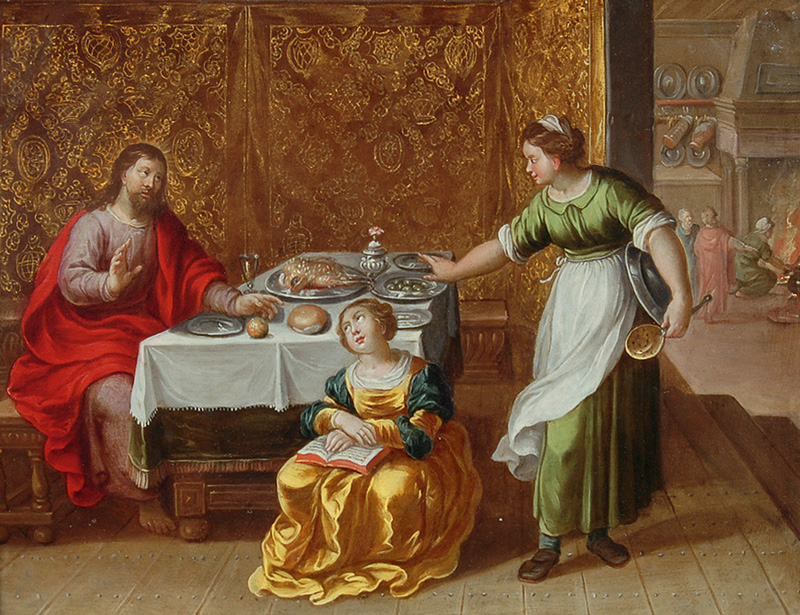 Continuing our series on Nanine Charbonnel’s Jésus-Christ, sublime figure de paper . . . .
Continuing our series on Nanine Charbonnel’s Jésus-Christ, sublime figure de paper . . . .
–o–
Where did the gospel characters come from?
Nanine Charbonnel [NC] presents a case for the parabolic or symbolic character of the gospels. In the second chapter of the second part of Jésus-Christ, sublime figure de papier, we see how narrative figures who appear as historical persons are best explained as symbols of collective groups. We have seen how in the Jewish Scriptures individuals in a story represent nations: e.g. In Hosea the person Israel stands for the whole of Israel; Abraham and Sarah being expelled from Egypt prefigure the Exodus, and many other cases can be cited.) Here are NC’s thoughts on some Gospel figures.
.
Zechariah and Elizabeth
This couple represents the Jews of the Temple.
Zechariah (=YHWH remembers). In the Protoevangelium of James (or Infancy Gospel of James) Zechariah, the father of John the Baptist, is slain by Herod for refusing to reveal where his son John was hidden. In the Jewish Bible the same name is martyred by the king Joash. Joash had been hidden safe from the murderous Athaliah by the father of Zechariah, the priest Jehoiada, but forgot his kindness and had his son Zechariah stoned (2 Chronicles 24:17-22).
Elizabeth is said to be descended from Aaron in Luke 1:5.
In the time of Herod king of Judea there was a priest named Zechariah, who belonged to the priestly division of Abijah; his wife Elizabeth was also a descendant of Aaron.
.
Mary and Martha

These sisters are drawn from Naomi and Ruth in the Book of Ruth. They represent the Jews and the gentile converts. The gentiles preceded the Jews.
Since the Middle Ages much there has been much discussion about how their roles act out the superiority of the contemplative over the active life. But that meaning was far from the mind their original creator, says NC.
Naomi is called Mara:
“Call me not Naomi [that is, Pleasant]. Call me Mara [that is, Bitter], for the Almighty hath dealt very bitterly with me. (Ruth 1:20)
She came from Bethlehem (Ruth 1:1-2).
The fourth evangelist changed Naomi-Mara of Bethlehem to Mary of Bethany (=house of affliction (or figs)).
Martha is Ruth of Bethlehem (Ruth 1:19-22) with the prefix mem (מ) (préfixe qui sert à faire des noms, = prefix used to make names, NC 228) added to RWTH (rūt – ר֖וּת) to make MaRWTH — which becomes Martha in Greek. So Ruth of Bethlehem becomes Martha of Bethany.
Jesus gently chides Martha for her busyness and commend Mary for having chosen the appropriate response to his presence. Martha is eclipsed by Mary just as the Mosaic covenant with its preoccupation with works of the law is eclipsed by the way of “a good heart and prayer”. This is how it was with Naomi and Ruth.
The two women divide their tasks. After years in Moab Naomi-Mara hears that there is bread to be found in Bethlehem (=house of bread) so she rises and returns. Once back home there, she sits in the house while Ruth gleans for bread. Finally, she sits Ruth down to find her a husband. The author of the Gospel of Luke has transferred these attitudes to “anyone who agrees to listen to the story of Israel”. Mary-Mara is sitting down because one day earlier she got up and one day again she will get up. Martha-Ruth is busy with food because one day (a different time) she sat down to listen to the Torah and another day she will be seated to listen to it again. Mary and Martha, like Naomi and Ruth, are living out the Feast of Weeks, Pentecost, the gift of the Torah, the permanent gift of the Word . . . .
(More paraphrase than translation of Marie Vidal, Jesus and Virounèka, 2000, p. 168, quoted in NC 228f. The link is to an Amazon page with a description of the book. Use Google Translate to convert it to English.)
.
The Hemorrhaging Woman and Daughter of Jairus
Continue reading “The Symbolic Characters in the Gospels: Personifications of Jews and Gentiles”
